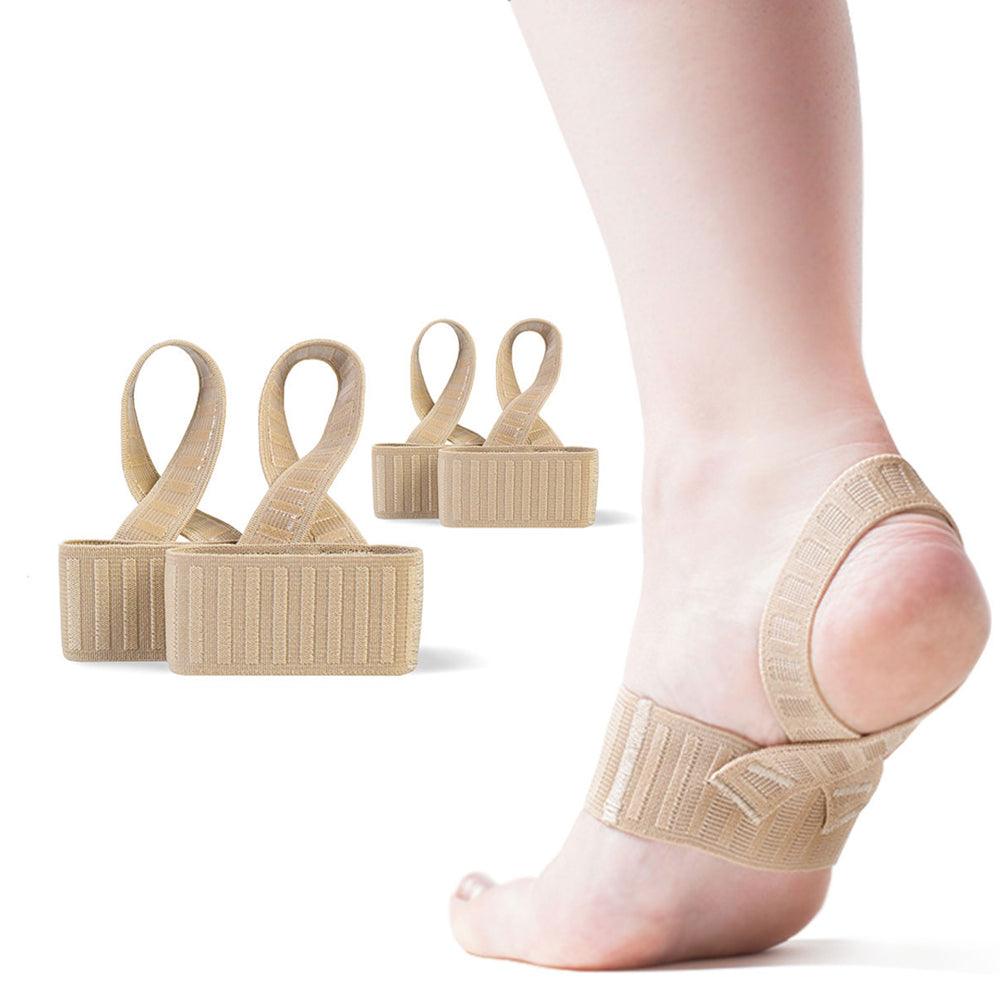Approximately 2 million Americans seek heel pain treatments yearly. About 70% of them often report experiencing moderate to severe pain. Moreover, one in 10 adults experiences plantar fasciitis which is slowly becoming the new epidemic in town, especially during Covid-19.
Whether you are at work or home, heel pain can affect your daily lifestyle. Fortunately, you do not need any surgical interventions. Preventive measures can lessen your odds of developing heel pain and foot injuries, but many people often ignore these measures. Starting early heel pain treatments can quicken your healing process. Here are ways to help you treat heel pain.
5 Heel Pain Relief Treatments To Consider
You can adopt several heel pain treatment options to speed up your recovery. However, these options may not be applicable in all cases as some heel pain conditions require medical interventions.
Perhaps, you are starting to feel pain in the arch or heel, and you are wondering about the next step to consider. Here are some remedies you can take.
1. Resting Your Heel
Always have a peaceful rest immediately after you notice heel pain. This means no running, jumping, or long-distance walks as they may worsen your condition. Depending on your condition, you can take some time off from work and stay at home while resting your feet for six to eight weeks.
2. Icing And Massaging Your Feet Every Day
While you are resting, you should apply ice on the surface of your heel three to four times for about 10-20 minutes every day.
Put a filled water bottle in a freezer. Once it freezes into ice, wrap it in a towel and place it on the surface of your heels and massage the area.
3. Stretching Your Feet And Legs Regularly
Avoid doing intense muscle exercises during the first few weeks of pain. Instead, apply slight pressure on your calf muscles and plantar fascia multiple times during the day. You can do this every morning for 30 seconds to 1 minute. Lean against a wall and extend one leg forward as you stretch your calf muscles as many times as you can.
4. Taking Pain Relief Medication
Heel pain can make you feel more uncomfortable at home or work. If you feel pain, you can take over-the-counter pills such as ibuprofen to minimize your discomfort. If the pain persists, it is advisable to visit a doctor.
5. Using Orthotic Inserts
Shoe inserts, also known as arch supports or orthotics, can give you added stability. Using orthotic arch supports can assist you when you want to wear your shoes. Orthotic inserts give you much support and ensure even distribution of body weight. We have a variety of arch and heel supports for you to choose from including Tuli's® Plantar Fasciitis Insoles, Tuli's® The X Brace® and Tuli's® Gaitors® 3/4 Length Arch Supports.
Visit a physician if you’re considering getting orthotic inserts. When you choose one, ensure it is firm and has good arch support.
4 Ways To Prevent Heel Pain
Why wait till you get heel pain? You do not have to begin experiencing heel pain to start taking care of your feet.
If you want to prevent heel pain, we’ve got you covered. Consider taking the following steps:
1. Wear Shoes That Fit Properly
Wearing unsupportive shoes is one of the causes of heel pain. If you fail to provide the proper support for your feet, your bones will shift and cause heel pain. Besides, wearing shoes that do not fit makes your heel pain worse and contributes to other foot conditions.
Ensure your shoes fit you well. You can avoid high, smaller, and bigger shoes to minimize your chances of getting heel pain. Instead, use flat shoes or moderate heels with firm arch support.
2. Do Low-Impact Exercise
As much as a workout is essential, learn to begin your sessions with lighter exercises. You may experience heel pain after intense workouts so start with easy exercises while slowly moving to moderate and extreme training.
For example, you can do a simple full-body stretch or lower body exercises during your first 1–2 weeks. You can increase your efforts by 10% every week.
3. Pace Yourself During Exercises
Before you begin exercises, always warm up and stretch. Whether you look forward to light or intense training, pacing yourself prepares your body for more vigorous workouts. Give more attention to your calves and feet.
Ten to twenty minutes of warming up is an effective way to minimize injuries during training. You can stretch or jog before engaging in intense exercises.
4. Maintain A Healthy Diet
Maintaining a healthy diet is directly correlated to your muscle strength. Researchers have found that plantar fasciitis is prevalent among obese people. Overweight people have a high chance of suffering from heel pain. Obesity aggravates plantar fasciitis. As a result, diet changes can help prevent heel pain.
Never Ignore Any Sign Of Heel Pain
Heel pain treatment and prevention require increased attention to your feet. Be mindful of the stresses on your feet.
If you ever experience heel pain, Medi-Dyne offers you a wide range of healthcare products and heel support products that can provide heel pain relief. From Tuli's® So Soft® Heavy Duty Heel Cups to Tuli’s® Plantar Fasciitis Insoles we have a variety of options.
Check out Medi-Dyne’s heel supports that can provide you with heel pain relief. Don’t hesitate to contact us if you have any questions about heel pain treatment and prevention.






















